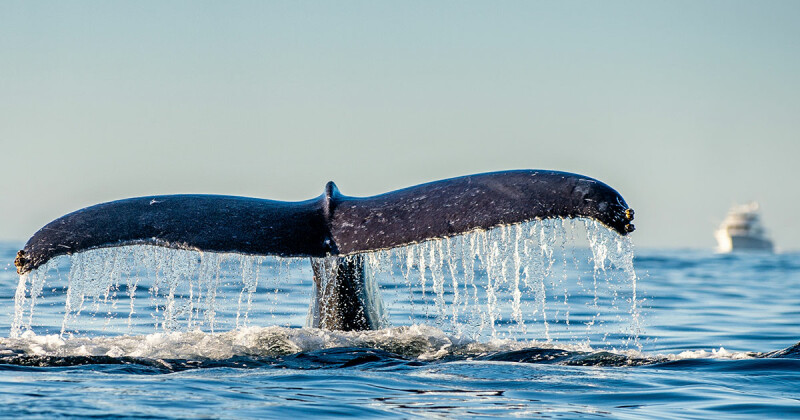SeaRobotics Corp. and CSA Ocean Sciences Inc., have signed a deal with Woods Hole Oceanographic Institution to collaborate on the commercialization of Woods Hole's infrared camera based marine mammal detection and classification technology.
Woods Hole’s technology for automated whale detection has been deployed on various vessels since 2009 to help protect marine animals from being struck by ships, one of the leading causes of injury and death to whales.
Under the leadership of Woods Hole's Dr. Daniel Zitterbart, scientists have been working for over a decade to develop the next-generation detection system which uses thermal infrared (IR) cameras to monitor for the presence of whales in shipping lanes.
Installed on ships, the systems can automatically alert ship captains to the presence of whales up to a three kilometers (1.8 miles) distance to allow most vessels to slow down or change course. When mounted high enough above sea level — such as on offshore wind turbines — these systems can detect whales at a distance of up to 10 kilometers (6.2 miles).
The collaboration is designed to leverage Zitterbart’s expertise to inform further development and field testing of the technology, with the ultimate goal of a multiphase commercialization effort and a family of off-the-shelf products designed to address the environmental mitigation needs of a broad spectrum of ocean stakeholders.
Across the maritime, defense, and offshore energy industries, operators are reportedly looking for more proven, practical solutions that help establish and validate a transition toward safer, more efficient remote operations. This operational shift hinges on developing scalable automated technologies —hardware and software — to acquire, process, and validate real-time data. Effective monitoring and mitigation of risk, in this case marine mammal detection and intervention procedures, will depend on the combined quality of technologies and the professional training necessary to supervise and manage certain activities.
“We are delighted to announce our commitment to advancing this important technology and excited about the prospect of pooling our expertise in developing autonomous surface vehicles (ASVs) and other robotic marine systems with both WHOI and CSA’s vast experience of developing robust and reliable environmental mitigation strategies,” SeaRobotics President Don Darling said in a statement announcing the agreement.



.JPG.small.400x400.jpg)

